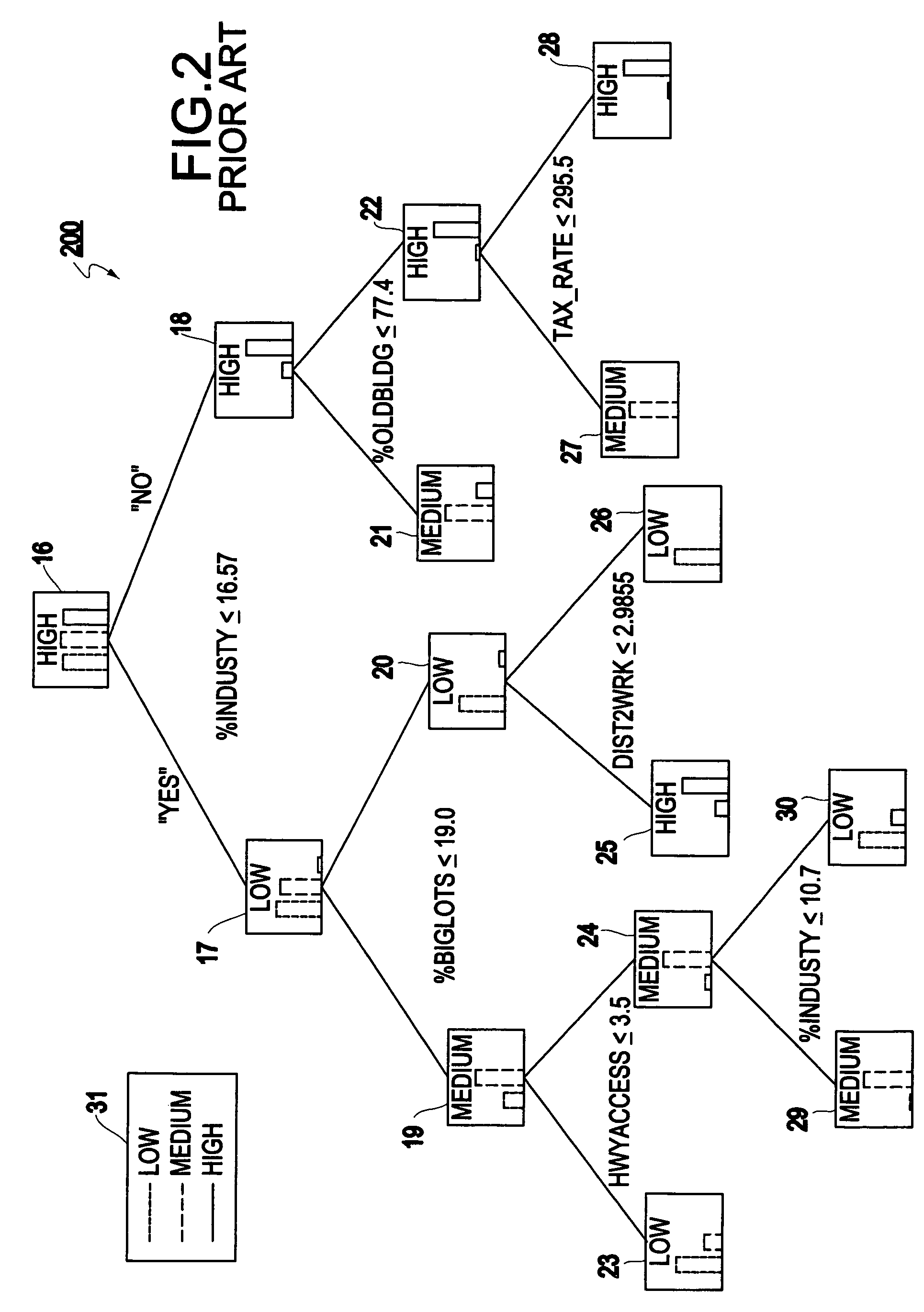Method and structure for transform regression
a transform regression and method technology, applied in the field of data mining and knowledge discovery of computer databases, can solve the problems of inability to achieve the effect of enhancing accuracy, and reducing the accuracy of decision tree models
- Summary
- Abstract
- Description
- Claims
- Application Information
AI Technical Summary
Benefits of technology
Problems solved by technology
Method used
Image
Examples
second embodiment
[0164]In the feature transformation modules 407, 411, 415 shown in FIG. 4, all other input fields are included as potential regressors in all stepwise linear regressions that are performed in the leaves of the transformation trees that are constructed, in addition to the outputs of previous stages and the fields being transformed. Applying either the holdout or the cross-validation method described above will then select a subset of predictive regressors in each leaf without overfitting the training data.
[0165]This second embodiment of the feature transformation modules has the advantage of providing still faster convergence, and of potentially modeling an even wider range of cross-product interactions. However, this second embodiment does have a disadvantage in that it imposes a greater computational burden, both in terms of the memory requirements of the resulting process and the amount of additional computation that must be performed. This additional burden is not very large when...
third embodiment
[0167]the feature transformation modules 407, 411, 415 shown in FIG. 4, all fields in a pre-designated subset input fields are included as potential regressors in all stepwise linear regressions that are performed in the leaves of the transformation trees that are constructed, in addition to the outputs of previous stages and the fields being transformed. Applying either the holdout method or the cross-validation method described above will then select a subset of predictive regressors in each leaf without overfitting the training data.
[0168]The pre-designated input fields would be specified as an input to the data mining process itself. For example, in the case of a database-embedded embodiment of the present invention, the pre-designated input fields would be specified as part of the data mining query, together with the target field that is to be predicted and the other input fields whose values can be used to generate predictions.
[0169]This third embodiment of the feature transfo...
PUM
 Login to View More
Login to View More Abstract
Description
Claims
Application Information
 Login to View More
Login to View More - R&D
- Intellectual Property
- Life Sciences
- Materials
- Tech Scout
- Unparalleled Data Quality
- Higher Quality Content
- 60% Fewer Hallucinations
Browse by: Latest US Patents, China's latest patents, Technical Efficacy Thesaurus, Application Domain, Technology Topic, Popular Technical Reports.
© 2025 PatSnap. All rights reserved.Legal|Privacy policy|Modern Slavery Act Transparency Statement|Sitemap|About US| Contact US: help@patsnap.com



